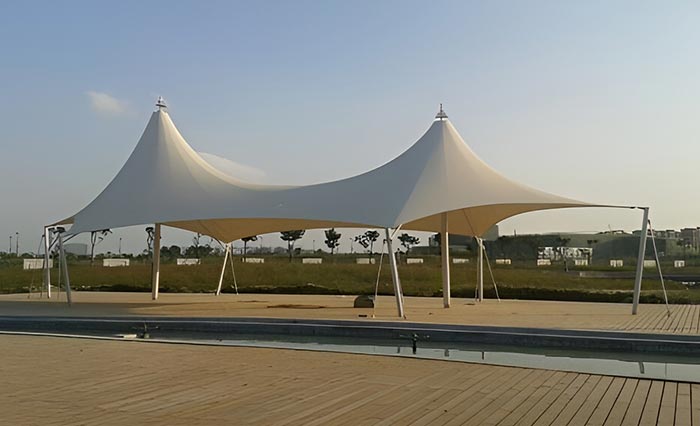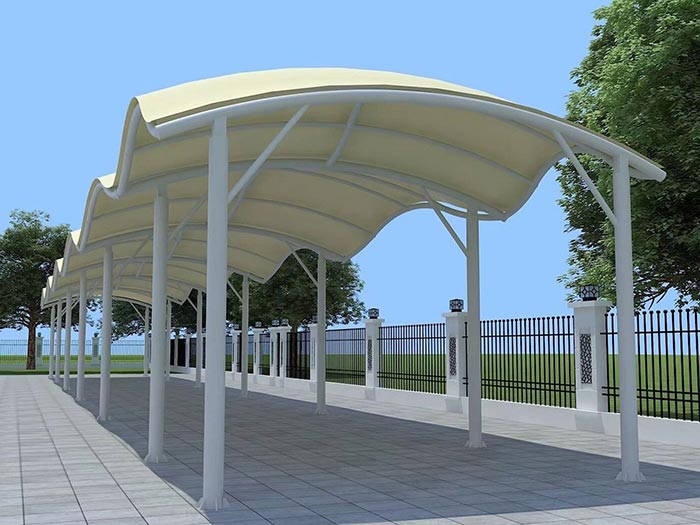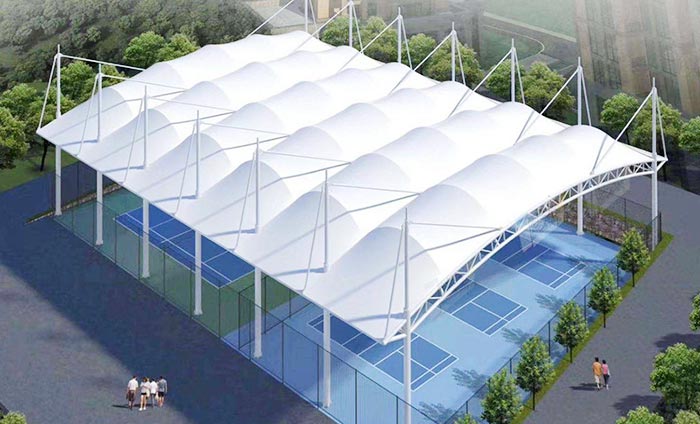Why choose stretch fabric tension structures?
Stretch fabric tension structures are becoming increasingly popular in modern architectural design. Their unique aesthetics, functionality and sustainability make them an ideal choice for many projects. This article will explore the advantages of tensile fabric structure and why this innovative structural form is chosen in architectural design.
What is stretch fabric tension structures?
Stretch fabric tension structures are made of high-strength fabric materials (such as polyester, polyurethane or Teflon), usually combined with metal frames to form a building form that can withstand various external forces. This structure creates a lightweight and stable space through a combination of tension and compression. It is widely used in stadiums, exhibition centers, commercial buildings, leisure facilities and temporary event venues.

Advantages of stretch fabric tension structures
1. Aesthetic design
Tensile fabric structure can achieve free curves and streamlined designs. This flexibility allows architects to create unique and eye-catching appearances. The smooth surface of the fabric and the rich color selection make the building not only functional, but also a visual focal point. Whether in the urban landscape or in the natural environment, this structure can be in harmony with the surrounding environment and enhance the overall aesthetic.
2. Lightweight and high strength
Compared with traditional building materials, stretch fabric structures are usually lighter in weight. This lightweight feature reduces the need for infrastructure during design and construction, thereby reducing construction costs and construction time. Although the structure is light, its high strength and toughness ensure safety in adverse weather conditions and can withstand natural disasters such as wind and snow.
3. Superior environmental adaptability
Stretch fabric tension structures have good environmental adaptability. Fabric materials generally have high UV resistance and weather resistance, and can effectively resist the erosion of sunlight, rain and other climatic factors. In addition, the permeability of the structure allows air circulation, reducing the temperature inside the building and improving comfort. This feature is particularly suitable for hot or humid climate conditions.
4. Sustainability and environmental protection
Tensile fabric structures have significant advantages in environmental protection. First, many fabric materials are recyclable, which is in line with the concept of sustainable development. Second, the lightweight design reduces the consumption of natural resources and reduces the carbon footprint of the building. In addition, the reflective properties of the fabric can reduce the building’s demand for air conditioning and lighting, thereby reducing energy consumption.
5. Convenient construction
The construction of tensile fabric structure is relatively simple and can usually be completed in a shorter time. Due to its modular design, prefabrication and on-site assembly are relatively convenient, reducing the complexity and duration of on-site construction. In addition, the lightweight characteristics make transportation and installation more efficient and suitable for various project requirements.

Application examples
1. Stadiums
Many modern stadiums use stretch fabric tension structures to meet the needs of large-span spaces. For example, the roof design of many football fields and tennis courts adopts this structure, which not only provides a good viewing experience, but also effectively resists external weather effects.
2. Exhibition and event spaces
In exhibition centers and temporary event venues, fabric tension structures can be quickly built and provide flexible space layouts. Its unique appearance attracts a large number of tourists and enhances the influence and participation of activities.
3. Commercial buildings
Many shopping malls and public buildings have also begun to adopt tensile fabric structure to create open and attractive spaces. This structure can not only effectively guide the flow of people, but also provide a comfortable leisure environment.

Summary
Choosing stretch fabric tension structures as part of architectural design is not only about pursuing aesthetic innovation, but also about meeting the high requirements of modern architecture for functionality, durability and sustainability. With the continuous development of the construction industry, the application of tensile fabric structures will become more and more extensive and become an important trend in future architectural design. Through this structure, architects and designers can create more flexible, environmentally friendly and visually impactful spaces, and shape a better city and living environment.